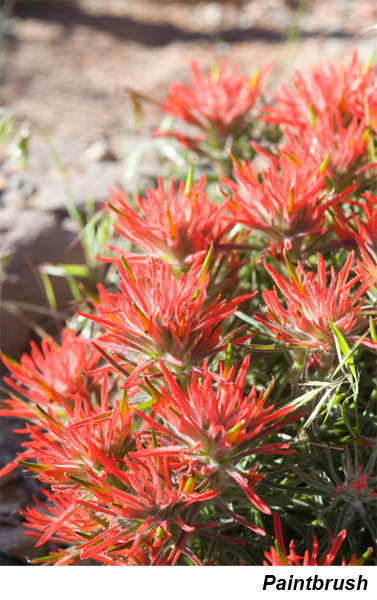
There were many lessons learned from the recent one-year drought; the most obvious being the realization that our water supplies in Texas really are a limited resource.
Sure, all children learn water is a finite resource in school, but it’s still a concept that cannot be fully appreciated without observing bone dry river beds, reservoirs
with more beach than water and millions of dead trees state-wide that simply couldn’t manage to survive the heat and lack of rain.
Since the majority of the state’s cities and water providers imposed restrictions on outdoor watering as the drought progressed, most Texans witnessed lawns and gardens
slowly wither away as water supply was reserved for basic, every day needs such as washing, bathing and drinking.
Now that recent rains have allowed the state to begin to recover from last summer’s devastation, all Texans are faced with the challenge of breaking away from the “we’ve
always done it this way” attitude and learning from a hard experience.

Though the Brazos River Authority is a major water provider for the basin, the organization's Central Office headquarters did not escape the drought unscathed. As outdoor
watering restrictions increased, the Authority began taking a good look at their own back yard.
“We began with an audit of our landscape watering practices,” said Jim Forte, an Authority manager. “We took a good look at how we water and the type of landscaping we use;
and frankly, we realized that we could do a better job.”
Built in 2001, the Authority’s Central Office headquarters sits on 11 acres of land in a residential area of Waco. Like many businesses, the organization worked with a
professional landscape firm to install and maintain the building’s landscape. Though the design was pleasing to the eye, it wasn’t especially water-wise.
“The planting around the building was designed under an entirely different set of values than those we need to practice under today,” Forte said. “That attitude is now changing.”
Authority staff analyzed the frequency and length of time the property was watered and soon determined a significant reduction in the amount of water would still maintain the
landscape. The volume output of each sprinkler zone was measured and scaled back. The number of sprinkler heads was dramatically decreased throughout the property and now
irrigate only the areas closest to the building.
Crews replaced the sprayer-type sprinkler heads positioned around trees with drip irrigators that cut down on the amount of water lost to evaporation by applying it
directly to the soil next to the tree.
Over the last several months these changes have allowed the Authority to reduce irrigation water use to about 62 percent of the amount previously used over a five-year
average. Additional efforts in the planning stages could lead to even more savings.
“We have been able to shave off peak water use and bring down the average, even though we have been going through an unprecedented drought,” said Don Perkins, Brazos River
Authority project development analyst.

Over the next several months the Authority plans to reduce irrigation water use further by replacing much of the current landscaping with native and more drought tolerant
plants. Varieties of grasses, shrubs, trees and flowering plants that require less water and are better suited for Texas’ climate will be planted this spring.
Once the entire changeover to a more water-wise landscape is complete, Authority staff hopes to decrease water use to about 40 percent of the amount previously needed for
irrigation.
Each of the steps taken by the Authority to become more water-wise can be adapted for use by individuals for their homes.
First, determine how much water the lawn requires. The AgriLife Extension Service has developed on online calculator that will help calculate the amount of water needed by a
lawn within a 10th of an inch. The calculator allows people to plug in specific information about their area. It uses weather data from 30 automated scientific weather stations
around the state taking into account the type of grass, amount of sunlight and other factors before determining the number of inches of water needed to sustain a lawn. To use
the online calculator, please click
here.
Individuals can also save water by examining where their lawn sprinklers spray. Any water that goes onto sidewalks or the street is wasted. Replacing sprinklers with drip
irrigation systems around plants and trees or in gardens will also make a big difference. A wide variety of such systems can be found at most lawn and garden centers.
Finally, using drought-tolerant native plants, or xeriscaping, can further ease water use. Such plants are widely available and information about them can be found online.
The AgriLife Extension has a Web page dedicated to the topic. It provides information about a wide variety of plants including numerous suggestions that will help make the
switch to water-wise plants successful. You can find the page
here. The Brazos River Authority also has a bounty of information about water conservation and xeriscaping at
this
link.
With the variety of plants and tools at our disposal, keeping a beautiful, water-wise landscape and lawn is a breeze.
